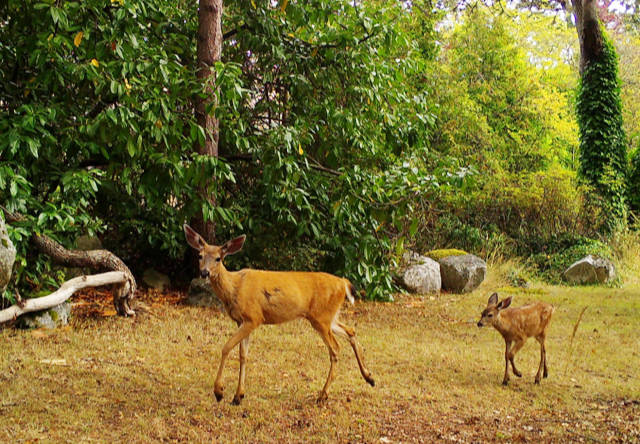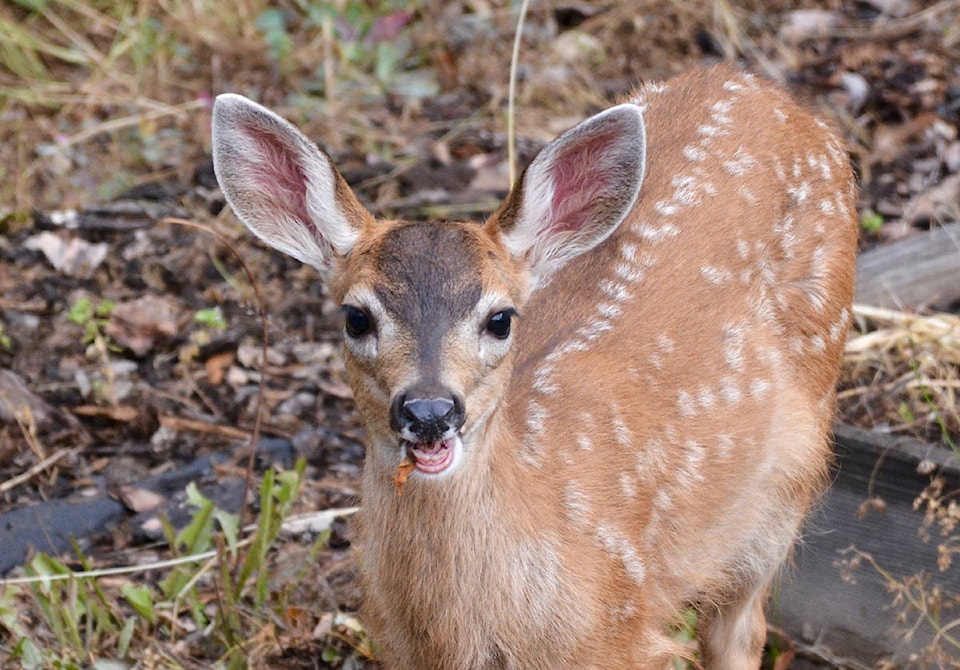People aren’t the only ones getting out and about these days.
With summer’s arrival, it’s also the time does start introducing their fawns to the wider world around them.
And that means it’s also time to pay a little extra attention as you drive, cycle and stroll local neighbourhoods, says Kristy Kilpatrick, from the Urban Wildlife Stewardship Society, working with the Township of Esquimalt on deer management, in addition to undertaking a research and deer contraception program in Oak Bay.
Here are 5 ways you can be deer aware this summer:
1. Physical distancing is for deer, too. Remember that does often act in a protective manner if you’re near a fawn – even if you can’t see it. If a doe seems to follow you, try changing direction as you may be unknowingly walking toward a hidden fawn.
2. But keep your dogs close. While you keep distance between you and the deer, it’s also important to keep your dog close. Dogs are perceived as a threat, so keeping them leashed and walking near you will help prevent unwanted interactions.
3. Be alert. Deer often appear suddenly, perhaps startled by people, dogs, traffic or even other does, and tend to be more active at dawn and dusk, when it’s more difficult to see them. Reduce your chance of colliding with a deer by slowing down and scanning ahead, especially in areas deer are known to frequent.
4. Watch for little ones. As fawns get a little older, they’ll start following mum out to forage, but young deer may be tentative as they approach the road and may not recognize vehicles as a threat. Others may dart into your path, where headlights can confuse and cause them to freeze or act unpredictably. Remember: if you see one deer, more are likely nearby.
5. If you find a fawn, leave it alone. Does shelter fawns from predators, leaving for long periods to forage, then returning to let fawns to suckle. Fawns are born without scent, and for the first few weeks, does may feed and sleep a considerable distance from the fawn to reduce the chance of attracting predators.
Wildlife centres like the BC SPCA’s WildARC field numerous calls from people who’ve found an “orphaned” fawn, but typically advise residents to leave it alone – the mother is likely nearby and will return once you leave.
If the fawn appears cold, weak, thin, injured, is bleating repetitively, or if the mother has not returned to a seemingly healthy fawn for more than eight hours, call WildArc. DO NOT remove the fawn on your own – if you’ve inadvertently handled the animal, rub an old towel on the grass, then gently wipe the fawn down to remove human scent.
For more tips about living with urban deer, visit uwss.ca.

